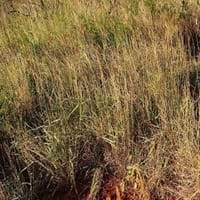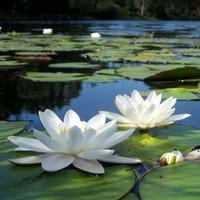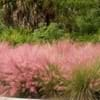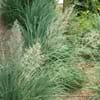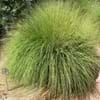Life Span
Perennial
Perennial
Type
Grass
Aquatics, Flowering Plants
Origin
Hybrid origin
Not Available
Types
Eulalia bicornuta, Eulalia hirtifolia
Not Available
Habitat
Grassland, Hillside
Ponds
USDA Hardiness Zone
5-9
4-11
AHS Heat Zone
9 - 1
Not Available
Sunset Zone
2a, 2b, 3a, 3b, 4, 5, 6, 7, 8, 9, 10, 11, 12, 13, 14, 15, 16, 17, 18, 19, 20, 21, 22, 23, 24
Not Available
Habit
Clump-Forming
Spreading
Flower Color
Orange, Orange Red, Red, Violet
White
Flower Color Modifier
Bicolor
Bicolor
Fruit Color
Non Fruiting Plant
Non Fruiting Plant
Leaf Color in Spring
Gray Green
Light Green
Leaf Color in Summer
Light Green
Light Green
Leaf Color in Fall
Purple, Bronze, Orange Red
Green
Leaf Color in Winter
Tan
Green
Leaf Shape
Grass like
Round
Plant Season
Spring, Summer, Fall, Winter
Early Summer, Late Summer
Sunlight
Full Sun
Partial Sun
Type of Soil
Clay, Loam, Sand
Aquatic Plant
The pH of Soil
Acidic, Neutral, Alkaline
Aquatic Plant
Soil Drainage
Average
Average
Bloom Time
Late Summer, Early Fall, Fall
Early Summer, Late Summer
Tolerances
Drought, Dry soil
waterlogging
Where to Plant?
Ground
In Water
How to Plant?
Divison, Seedlings
Stem Planting
Plant Maintenance
Low
Medium
Watering Requirements
Requires regular watering, Requires watering in the growing season, Water daily during growing season, Water more in summer
Plant grows in water
In Summer
Lots of watering
Aquatic Plant
In Spring
Ample Water
Aquatic Plant
In Winter
Average Water
Aquatic Plant
Soil pH
Acidic, Neutral, Alkaline
Aquatic Plant
Soil Type
Clay, Loam, Sand
Not Applicable
Soil Drainage Capacity
Average
Aquatic Plant
Sun Exposure
Full Sun
Partial Sun
Pruning
Prune if you want to improve plant shape, Prune to control growth, Remove damaged leaves, Remove dead leaves
No need to prune
Fertilizers
All-Purpose Liquid Fertilizer, Less fertilizing
Fertilize the first year
Pests and Diseases
Pest Free, Pests and diseases free, Red blotch
Leaf eating pests, Sap-Sucking Insects, Stem rot
Plant Tolerance
Drought
waterlogging
Flower Petal Number
Single
Single
Foliage Texture
Fine
Fine
Foliage Sheen
Matte
Matte
Attracts
Bees, Butterflies
Fishes
Allergy
Mold, Pollen, Skin irritation
Not Available
Aesthetic Uses
Ground Cover, Landscape Designing
Showy Purposes, Water gardening
Beauty Benefits
No Beauty Benefits
Good for skin, Moisturizing, Weightloss
Environmental Uses
Air purification, Amazing growth rate, Erosion control, Food for insects, No fertilizer, pesticides, or herbicides needed, Prevent Soil Erosion, Shelter for wildlife, Soil protection, Wildlife, Windbreak
Not Available
Medicinal Uses
Diuretic
Antibacterial, Anti-fungal, anti-inflammatory, Antioxidants, Astringent, Clears heat, Combats Stress, Detoxification, Diabetes, High cholestrol, Improve heart health, Liver problems, Low Blood Pressure, Phosphorus, Rich in Iron, Vitamin B, Vitamin C
Part of Plant Used
Leaves
Leaves, Root, Stem
Other Uses
Showy Purposes, Used in biomass
Can be made into a herbal tea, Culinary use, Used as Ornamental plant, Used in herbal medicines
Used As Indoor Plant
No
Yes
Used As Outdoor Plant
Yes
Yes
Garden Design
Dried Flower / Everlasting, Container, Cutflower, Feature Plant, Foundation, Mixed Border, Screening / Wind Break
Bog Garden, Water Gardens
Botanical Name
MISCANTHUS 'Purpurascens'
Nymphaea lotus
Common Name
Eulalia, Japanese Silvergrass, Purple Silvergrass
white Egyptian lotus, tiger lotus, white lotus or Egyptian white water-lily
In Hindi
Eulalia
सफेद कमल
In German
Eulalia
Tigerlotus
In French
Eulalia
Lotier d'Égypte, Lotus tigré
In Spanish
Eulalia
loto tigre, nenúfar blanco egipcio
In Greek
Eulalia
λευκό λωτού
In Portuguese
Eulalia
nenúfar-branco, lótus-branco, lótus-do-egipto, loto-sagrado-do-egito e lótus-sagrado-do-egito
In Polish
Eulalia
białego lotosu
In Latin
Eulalia
albus Lotus
Phylum
Embryophyta
Magnoliophyta
Class
Liliopsida
Magnoliopsida
Family
Poaceae
Nymphaeaceae
Clade
Angiosperms, Commelinids, Monocots
Angiosperms
Tribe
Andropogoneae
Not Available
Subfamily
Panicoideae
Not Available
Number of Species
Not Available
Season and Care of Eulalia and White Lotus
Season and care of Eulalia and White Lotus is important to know. While considering everything about Eulalia and White Lotus Care, growing season is an essential factor. Eulalia season is Spring, Summer, Fall and Winter and White Lotus season is Spring, Summer, Fall and Winter. The type of soil for Eulalia is Clay, Loam, Sand and for White Lotus is Aquatic Plant while the PH of soil for Eulalia is Acidic, Neutral, Alkaline and for White Lotus is Aquatic Plant.
Eulalia and White Lotus Physical Information
Eulalia and White Lotus physical information is very important for comparison. Eulalia height is 120.00 cm and width 60.00 cm whereas White Lotus height is 60.00 cm and width 60.00 cm. The color specification of Eulalia and White Lotus are as follows:
Eulalia flower color: Orange, Orange Red, Red and Violet
Eulalia leaf color: Gray Green
White Lotus flower color: White
- White Lotus leaf color: Light Green
Care of Eulalia and White Lotus
Care of Eulalia and White Lotus include pruning, fertilizers, watering etc. Eulalia pruning is done Prune if you want to improve plant shape, Prune to control growth, Remove damaged leaves and Remove dead leaves and White Lotus pruning is done No need to prune. In summer Eulalia needs Lots of watering and in winter, it needs Average Water. Whereas, in summer White Lotus needs Aquatic Plant and in winter, it needs Aquatic Plant.
